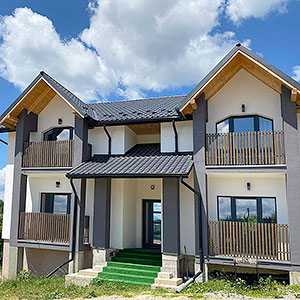Bili Oslavy
It is one of the biggest villages in the district, located between the rivers Oslava and Prut. The village lies for 5 km along the road Delyatyn–Yabluniv. Total area is 4040,4 ha, population — about 4500 persons. The village was first mentioned in a written document from 1745.
 Legends of the village name origin
Legends of the village name origin
Bili Oslavy and the neighboring village Chorny Oslavy are called "colored villages" by the locals.
Mariyka Pidhiryanka (1881-1963), the famous Ukrainian poetess, was born in Bili Oslavy in the forester's family. The former priest's house is a museum named after her.
The village was divided into streets only in the 1980is. The main street is named after the remarkable compatriot M. Pidhiryanka. The main village hamlets are Vodyshny, Horbyshchi, Vilyshchi, Hamanivka, Dolishnya Syhla, Horishnya Syhla, Pechenizhish and Tsarynka. Historains claim that the oldest settlement in the village was found on the territory of Vodyshny hamlet in 1575. The river and salt spring nearby facilitated this. The modern village emblem has a salt cellar on a mountain background.
The village, except the museum, also has a school, an ambulatory care clinic, a post office, a library and a forestry. The village is famous for its builders, carpenters, tinsmiths and masters of embroidery.
"The Mother" Church of the Immaculate Conception of St. Anna (1746) with a bell tower (1922)
The architectural monument of national importance. The memorial tablet says that the church was built in 1648 and rebuilt in 1746 and 1990. The church is made of wood, five log constructed, cross-in-square planned with an extended nave. It is one of the greatest examples of Hutsul architecture."The Nethermost" church of St. Dmitry with a bell tower (1835)
The architectural monument of national importance. It was built by the local craftsmen. The wooden church has cross-in-square plan. On the walls there is oil painting of the XXth century. Useful information:
Useful information:

 Ukraine
Ukraine Poland
Poland Slovakia
Slovakia
 Українською
Українською






